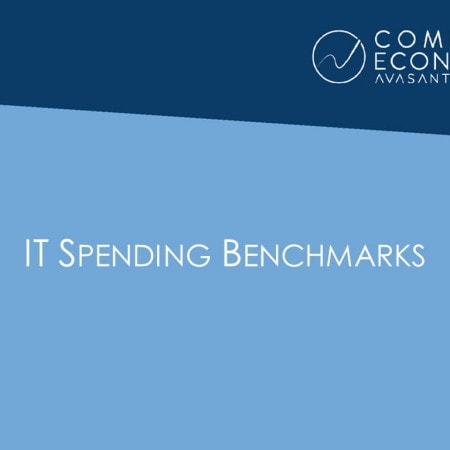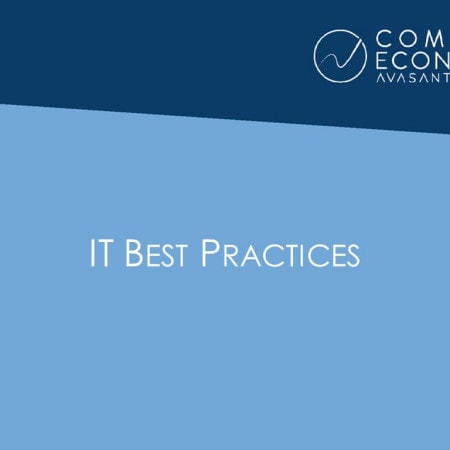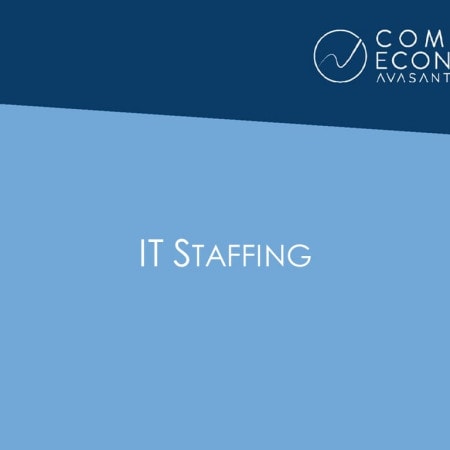-

Computing Power Trends by Platform and Sector DeciMark – 1991 to 2000 (Feb 2001)
The Computing Power Trends by Platform and Sector DeciMark shows changes in usage of various hardware platforms for the years from 1991 to 2000. The types of platforms include mainframes ($1 million or more), midrange systems ($100,000 to $999,999), LAN servers/superservers, and PCs/workstations. The Computing Power Trends by Platform DeciMark is designed to provide IT executives with a comparison of changes in computing power by platform for the last decade.
May, 2002
-

Use of Contractor/Temporary Personnel DeciMark – 1991 to 2000 (Feb 2001)
The Use of Contractor/Temporary Personnel DeciMark provides the lower quartile, median, and upper quartile of contractor and temporary staff compared to the total staff in the information systems department. The data is presented for each sector or by organization size. The lower quartile (25th percentile) presents the lowest 25 percent of contractor/temporary personnel used by all of the organizations, where 25 percent used less than that amount. The median (50th percentile) is the level at which half of the organizations used less and the remainder used more. The upper quartile (75th percentile) presents the highest 25 percent of contractor/temporary personnel used by all of the organizations, where 25 percent used more than that amount. Results are presented for the period of 1991 to 2000.
May, 2002
-

Computing Power Trends by Platform and Sector TriMark – 1998 to 2000 (Feb 2001)
The Computing Power Trends by Platform TriMark shows changes in usage of various hardware platforms for the years from 1998 to 2000. The types of platforms include mainframes ($1 million or more), midrange systems ($100,000 to $999,999), LAN servers/superservers, and PCs/workstations. The Computing Power Trends by Platform TriMark is designed to provide IT executives with a comparison of changes in computing power by platform for the last three years.
May, 2002
-

Technology Acquisition Plans for the Next 12 Months: Organizations Planning to Make Acquisitions TriMark – 1998 to 2000 (Feb 2001)
Technology Acquisition Plans for the Next 12 Months: Organizations Planning to Make Acquisitions TriMark shows the percentage of organizations that intend to acquire technology within the next year. For each technology listed, the remaining percentage of sites does not plan to acquire that technology this year. Information is broken down by sector or organization size. Technology areas included are mainframes, midrange systems, LAN servers/superservers, desktop PCs, workstations, storage systems, network hardware, network software, database software, application software, ERP software, and e-commerce software. Results are presented for the period of 1998 to 2000.
May, 2002
-

Technology Acquisition Plans for the Next 12 Months: Organizations That May Acquire TriMark – 1998 to 2000 (Feb 2001)
Technology Acquisition Plans for the Next 12 Months: Organizations That May Acquire TriMark shows the percentage of organizations that may acquire technology within the next year but are not absolutely certain that they will acquire. For each technology listed, the remaining percentage of sites does not plan to acquire that technology this year. Information is broken down by sector or organization size. Technology areas included are mainframes, midrange systems, LAN servers/superservers, desktop PCs, workstations, storage systems, network hardware, network software, database software, application software, ERP software, and e-commerce software. Results are presented for the period of 1998 to 2000.
May, 2002
-

E-Business Practices by Sector and Organization Revenue TriMark – 1998 to 2000 (Feb 2001)
E-Business Practices TriMark provides the percentage of respondents in our study that have or utilize various e-business capabilities. Results are shown for each sector or size of organization. The e-business capabilities include having a website, engaging in Web-based business-to-business or business-to-consumer transactions, achieving profits on those e-commerce efforts, and outsourcing website functions. Other capabilities include EDI via the Internet, EDI via direct dial connections with suppliers, and EDI via direct dial connections with consumers. The following tables show data by industry sector and organization revenue. The TriMark results are presented for the period of 1998 to 2000.
May, 2002
-

Technology Implementation Status TriMark – 1998 to 2000 (Feb 2001)
The Technology Implementation Status TriMark shows the percentage of organizations researching, piloting, implementing, using, or not using various information technologies or e-business applications. These include Internet connectivity, e-commerce, mainframe consolidation, server consolidation, telecommuting, and ERP software. The following tables show data by industry sector, technology, and organization revenue. The TriMark results are presented for the period of 1998 to 2000.
May, 2002
-

E-Business Practices in 2002 (May 2002)
E-business practices are becoming rather widely adopted in most industry sectors according to the 13th annual Information Systems and E-Business Spending study conducted by Computer Economics. Virtually all of the organizations that participated in the 2002 study have web sites and large percentages of companies in every sector are using B2B or B2C applications.
May, 2002
-

Central IS Budget Allocations by Organization Revenue TriMark – 1998 to 2000 (Feb 2001)
The IS Budget Allocations TriMark compares the average spending in major budget categories for the years from 1998 to 2000. The IS Budget Allocations TriMark process is designed to provide IT executives with a strategic comparison of budget allocations over an entire decade of IT spending.
February, 2001
-

Central IS Spending Per Employee TriMark-1998 to 2000 and DeciMark-1991 to 2000 (Feb 2001)
The Central IS Spending Per Employee InfoTechMark provides a measure of IS productivity for each sector or organization size. Results are provided for the lower quartile, median, and upper quartile. The figure includes the lower quartile, median, and upper quartile amounts of spending per employee. The lower quartile (25th percentile) presents the lowest 25 percent of spending by all of the organizations, where 25 percent spent less than that amount. The median (50th percentile) is the level at which half of the organizations spent less and the remainder spent more. The upper quartile (75th percentile) presents the highest 25 percent of spending by all of the organizations, where 25 percent spent more than that amount.
February, 2001
-

Workers Supported Per IS Employee DeciMark – 1991 to 2000 (Feb 2001)
Workers Supported Per IS Employee DeciMark shows another measure of IS productivity. The lower quartile, median, and upper quartile are presented. The lower quartile (25th percentile) presents the lowest 25 percent of workers supported in all of the organizations, where 25 percent supported less than that amount. The median (50th percentile) is the level at which half of the organizations supported less and the remainder supported more. The upper quartile (75th percentile) presents the highest 25 percent of workers supported in all of the organizations, where 25 percent supported more than that amount. Results are presented for industry sector and by organization revenue for the period of 1991 to 2000.
February, 2001
-

Workers Supported Per IS Employee TriMark – 1998 to 2000 (Feb 2001)
Workers Supported Per IS Employee TriMark shows another measure of IS productivity. The lower quartile, median, and upper quartile are presented. The lower quartile (25th percentile) presents the lowest 25 percent of workers supported in all of the organizations, where 25 percent supported less than that amount. The median (50th percentile) is the level at which half of the organizations supported less and the remainder supported more. The upper quartile (75th percentile) presents the highest 25 percent of workers supported in all of the organizations, where 25 percent supported more than that amount. Results are presented for industry sector and by organization size for the period of 1998 to 2000.
February, 2001
-

Central IS Budget Allocations DeciMark – 1991 to 2000 (Feb 2001)
The IS Budget Allocations DeciMark compares the average spending in major budget categories for the years from 1991 to 2000. The IS Budget Allocations DeciMark process is designed to provide IT executives with a strategic comparison of budget allocations over an entire decade of IT spending.
February, 2001
-

IS Staffing Trends DeciMark – 1991 to 2000 (Feb 2001)
The IS Staffing Trends DeciMark provides an overview of staff changes for each sector or by organization revenue. The differences between staff increases and decreases provide an indicator of whether the sector is experiencing staffing shortages or excesses. Results are presented for the period of 1991 to 2000.
February, 2001
-

IS Staffing Mix by Job Function TriMark – 1998 to 2000 (Feb 2001)
IS Staffing Mix by Job Function TriMark provides a breakdown by average percentage for each major IS labor category. Results are presented for industry sector and by organization size for the period of 1998 to 2000.
February, 2001

 Grid View
Grid View List View
List View